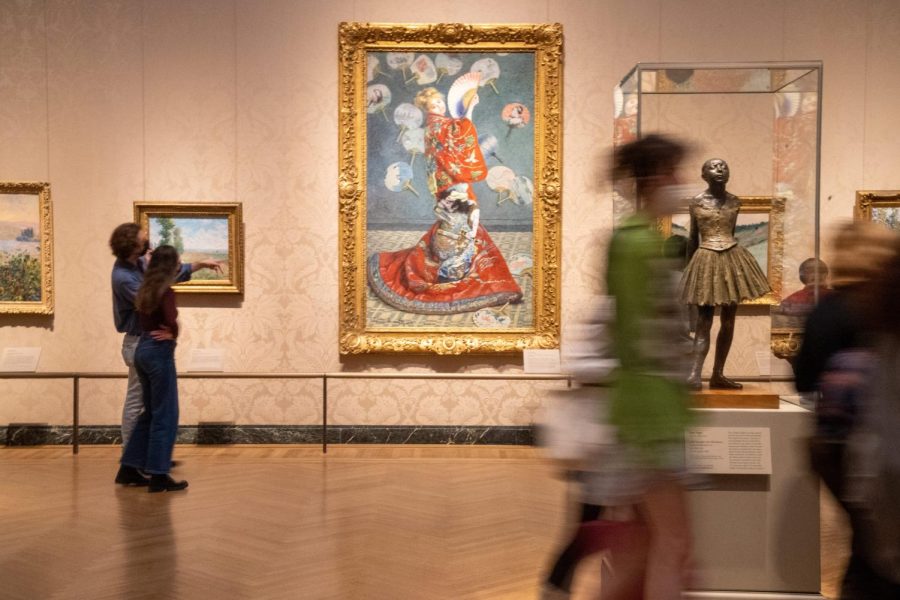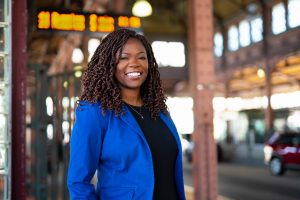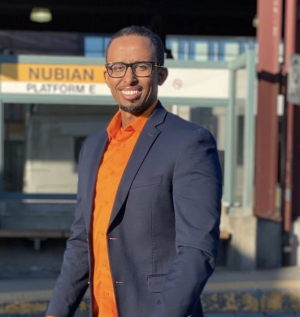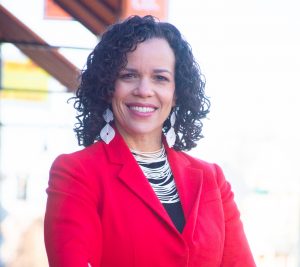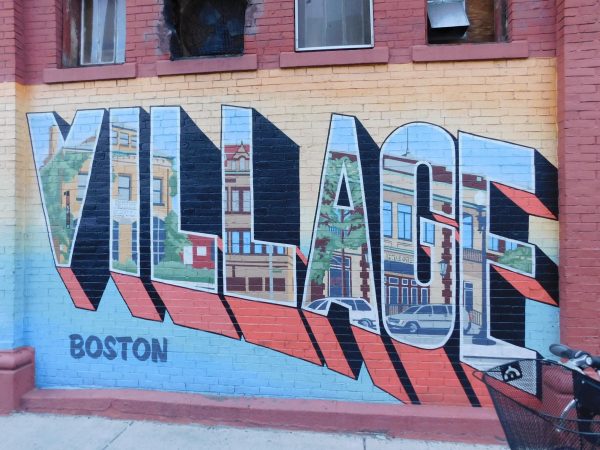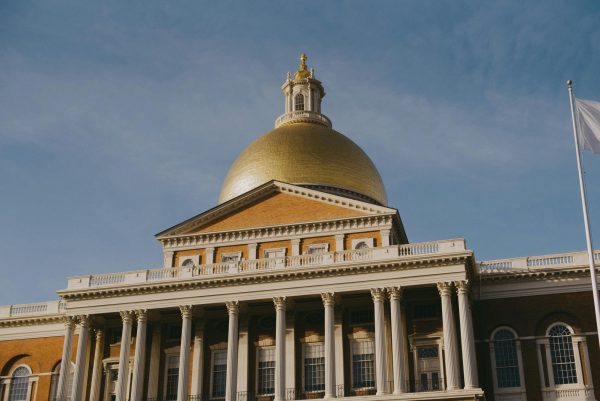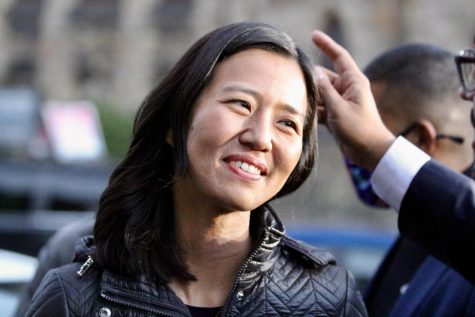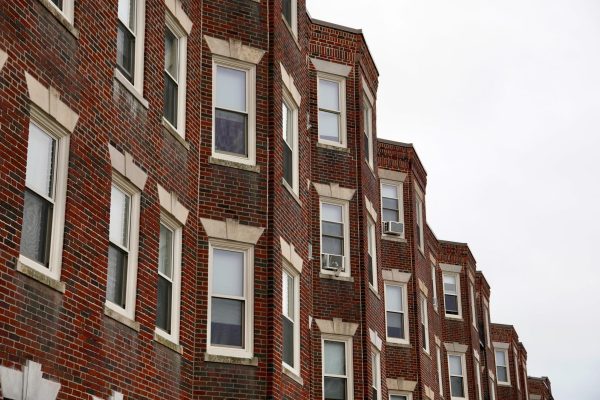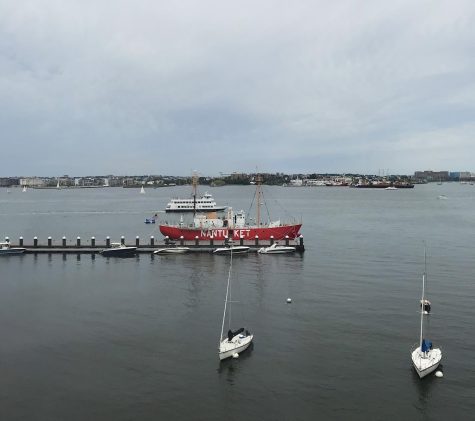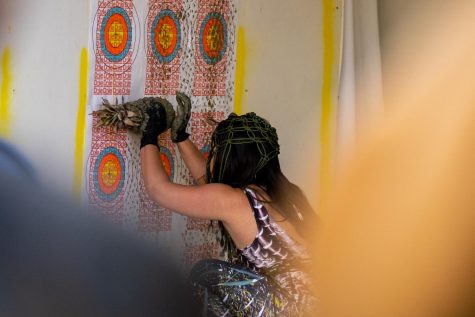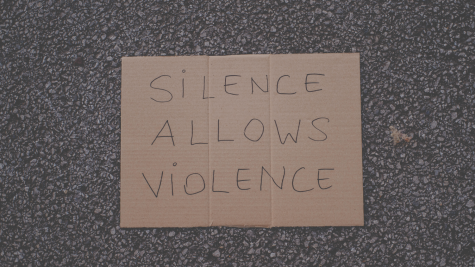Curating a culture of belonging: How Boston’s art museums are reimagining a more inclusive future
Photo: Taylor Blackley
Museum of Fine Arts Boston visitors view “La Japonaise (Camille Monet in Japanese Costume),” a large-scale figure portrait of the artist’s wife painted in the Impressionist style by Claude Monet in 1876. The painting also makes references to Orientalism, a growing movement within 19th century society, where Eastern people and cultures were depicted based on how white Europeans imagined them to look. “Oriental” subjects became so popular that a French Society of Orientalist Painters was founded in 1893.
Visual artists have long been using their craft to call for social and racial justice. Now, the time has come for institutions to answer.
Visual art is a forum for the public to come together to evaluate complex ideas such as identity, community and social change. In Boston, a city renowned for its wealth of art museums, there has been a visible shift in priorities among such cultural institutions that a white perspective has molded for generations.
“Cultural institutions are imperative to identity formation and the dismantling of systemic oppression because they connect the past to the present,” said Rosa Rodriguez-Williams of the Museum of Fine Arts Boston (MFA). “The sharing of narratives that have been erased is really the recovery of memory.”
Rodriguez-Williams embarked on her role as the MFA’s first Senior Director of Belonging and Inclusion in Sept. 2020. According to the museum’s website, the position was created as part of the 152-year-old institution’s broader work “to combat racism and achieve long-term systemic change.”
The MFA is the fifth largest museum in the country, with an expansive permanent collection that includes over 450,000 works of art. It reported 201,000 visitors for the 2021 fiscal year despite managing forced closures and a pandemic-related drop in attendance that resulted in a budgetary deficit of about $13 million. Pre-pandemic, the museum drew more than 1.3 million attendees in 2019.
The MFA has been explicitly grappling with the challenge of making the museum a more accessible and inclusive space that better represents the diversity of the surrounding communities for years now. In 2017, the museum announced initiatives “meant as a broad welcome to people of all ages and economic and cultural backgrounds.”
However, before these measures were fully integrated, things seemed to be moving in the opposite direction as visitors who “left the [MFA] feeling disrespected, harassed and targeted because of the color of their skin,” according to Matthew Teitelbaum, the museum director said in an official statement of apology.
In May 2019, the MFA was in the public eye, but what leadership at this popular arts destination saw wasn’t pretty. After visiting seventh-grade students from the Helen Y. Davis Leadership Academy in Dorchester felt subjected to multiple racial profiling and harassment incidents during a field trip, the MFA directed half a million dollars to develop an antidiscrimination policy and diversity initiatives.
As part of her role, Rodriguez-Williams leads voluntary curatorial roundtables each month where her colleagues engage in conversations on inclusive language, interpretive practice and decolonization frameworks.
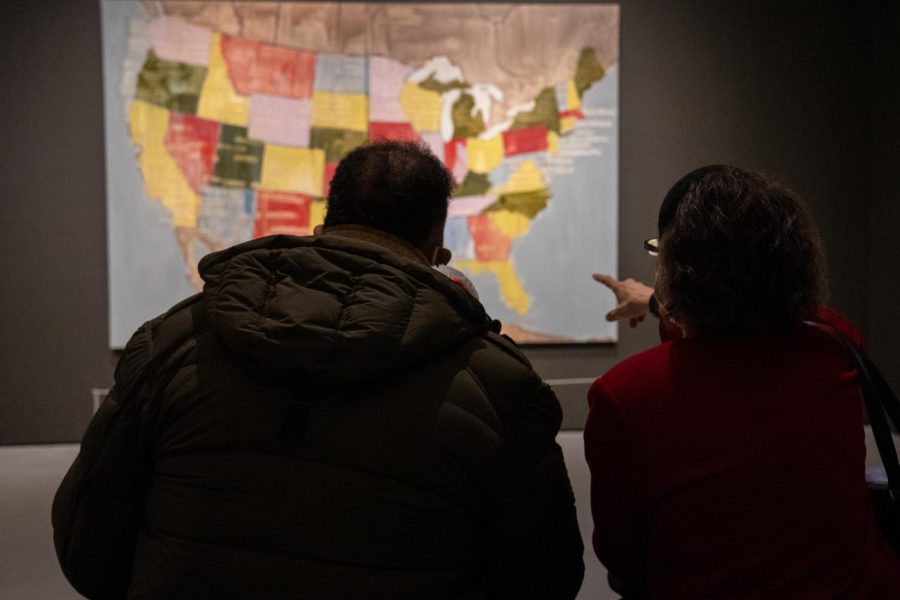
“Our role in this present moment, when so many want to somehow erase the past so that it is not connected to the present and the ongoing plight of BIPOC groups and marginalized group identities, has to go beyond just black and brown faces in servitude and in being enslaved,” Rodriguez-Williams told The Scope in March. “[Cultural institutions] have to represent the diversity of narrative and story, diversity in objects and artists.”
In recent years, promises to diversify staff and content, statements of solidarity and plans to enact equity initiatives have become standard for Boston’s aging arts institutions, many being white-dominated since their foundation. The present cultural climate seems to demand accountability in the wake of what some have deemed a reckoning on race and representation within American society. But according to some leaders in the cultural sector, tiptoeing around diversity, equity and inclusion aren’t enough — organizations need to foundationally integrate these principles into their operations to transform promises into changes.
“I just want to get past the belief in racial equity, and I want to really move people to action on racial equity … through your actions, you can build trust,” said Michael Bobbitt, the executive director of Mass Cultural Council. Since last February, Bobbitt has directed the state’s largest cultural agency and been on the board of directors at the New England Foundation for the Arts, making him the highest-ranking cultural official in Massachusetts.
“All the things equity, diversity, inclusion, anti-racism, anti-oppression [are] about showing love to people who … maybe have been unloved or underloved or never loved by this country as a whole,” said Bobbitt. “I want it to be second nature. Eventually, I want [these things] to be so infused into the culture that we don’t have to think about it as a separate thing. It just is.”
Mass Cultural Council recently launched a three-year Racial Equity Plan and restated its commitment to “better serve those in the cultural sector who have been systemically excluded.” The state agency also began releasing quarterly updates on its racial equity journey at the beginning of this year.
“This plan is not something that’s going to sit up on a shelf as a performative action,” said Bobbitt.
According to him, this plan will serve as a direction for tracking what has been achieved and identifying what areas still need improvements so new actions can be designed for the future. To effectively create a space of inclusion, predominantly white institutions need to look critically at who is in the room making decisions on what to present.
“Whatever decisions you’re making, having a diversity of opinions in the room, to me, is the biggest action that most organizations can take,” he said. “Once they decide to do multicultural programming, they have to get into the community … and build relationships with them that go beyond transactions. You can’t do diversity without people of color. It’s not going to work.”
Including people from multicultural backgrounds throughout the selection process for artists and art shown by museums (especially within leadership or managing roles) will help to create a more effective model for inclusive representation.
According to Bobbitt, this would create economic opportunities as new audiences feel invited to a space that uplifts the histories and perspectives of people who haven’t been as visible. Centering the voices of members of LGBTQ, BIPOC and other underserved communities also ignites conversations about inclusion within the larger public.
“Arts and culture, I think, has always been a social justice tool. Most of the way we remember our history, the struggles of our history, can be seen through art,” he said. “It’s integrated into who we are.”
Ruth Erickson, the Institute of Contemporary Art Boston (ICA) Manion Family curator, said at a press preview for a new exhibition that she feels like the museum has been seeking a more inclusive curatorial program and thinking about who is being depicted in the rotating exhibitions that fill the museum’s galleries.
Currently on display, “A Place for Me: Figurative Painting Now” features eight different painters, several of whom are queer, female and non-white. When selecting the artists to feature in the exhibition, Erickson focused on reimagining portraiture, “a haunted medium and genre,” and its relationship to power.
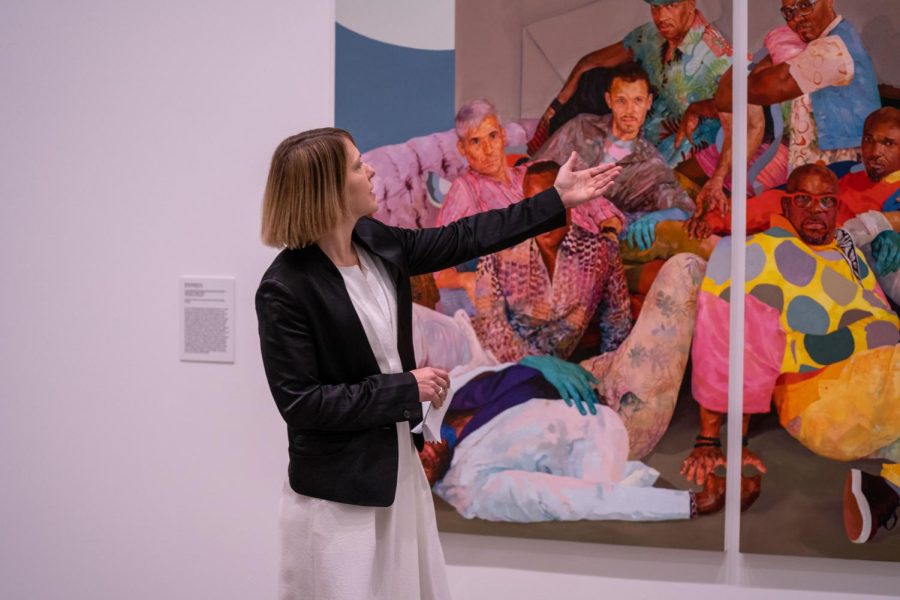
Painted portraits have historically been commissioned by those affluent enough to afford them as a way of asserting their position within society. In contrast, these artists’ current takes on the portrait depict their communities, chosen families, and lovers, many of whom come from identities that would have been marginalized rather than immortalized by the strokes of a paintbrush.
According to Erickson, the vibrant faces that gaze from the gallery walls represent a more diverse expression of who is being represented and how.
By selecting work that is unapologetic and authentic in its exploration of identities that fall outside of the traditional classification of fine art by European definitions, museums can give more space to underrepresented communities (whose bodies and culture have often been mischaracterized through a white lens) to feel seen and appreciated on their own terms.
The sound of upbeat, sensual music resonates through the fourth floor of the ICA, coming from the audio-visual installation “Swinguerra.” The 2019 work, a video of about 20 minutes that “focuses on disadvantaged queer communities of color in Recife, Brazil, with an emphasis on transgender and nonbinary performers,” is projected onto two screens that face one another, surrounding an audience in an otherwise dimly lit room with luminous expressions of community and resilience.
“You see these individuals and communities that are coming together, recognizing the reality that they live in, but insisting that they have a chance to express their joy and their happiness and their relationship to their own bodies — on their own terms,” Anni Pullagura, curatorial assistant at the ICA, told The Scope at a Mar. 29 preview for the multimedia installation.
At a time when LGBTQ+ and gender-nonconforming individuals worldwide continue to face discrimination, threats of violence and censorship, Pullagura said that films such as “Swinguerra” make an important statement. Because the performers pictured are members of real competitive dance groups and can even be found on social media, the work has an immediacy that she hopes will cause viewers to reflect (joyfully) on their relationships with others and themselves.
In the neighboring gallery, “I Am As I Am—A Man,” a solo exhibition of 50 years of work from internationally-renowned and locally-based artist Napoleon Jones-Henderson, opened in February and is on display until June 24.
“It’s long overdue in a museum like the ICA,” said Jeffrey Debois, the ICA’s assistant curator and publications manager who organized the exhibition, which is Jones-Henderson’s most comprehensive solo exhibition in Boston to date.
Jones-Henderson is a founding member of AfriCOBRA, or the African Commune of Bad Relevant Artists. AfriCOBRA was a collective of African American visual artists formed in 1968 that used visual images to empower all members of the African diaspora community.
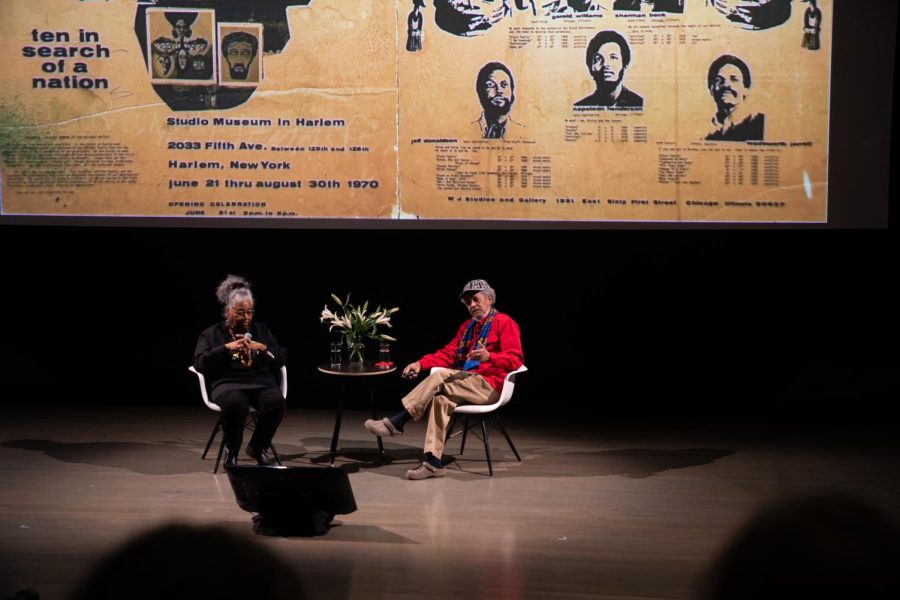
The organization has experimented with different artistic principles and mediums to define a unique visual language for Black self-identity — one that was liberated from the traditional, often oppressive, demands of a Eurocentric “fine arts” world. Jones-Henderson was known as “the weaver,” as he used fiber as his paints and his loom as a canvas.
“[Jones-Henderson] works at this intersection of craft and contemporary art that there hasn’t always been a context for in recent history in museums,” said Debois. He told The Scope at a Feb. 15 press preview for the exhibition that the ICA has been cultivating a conversation around broadening the intersections of contemporary art and craft for at least the past five years.
The artist was also exhibited in the Bruce C. Bolling Municipal Building in Roxbury. Since 2015, the building has been adorned by a piece commissioned by the city titled “Roxbury Rhapsody.” The mosaic of 400 tiles was created by Henderson-Jones and three apprentices who were students at Massachusetts College of Art and Design (MASSArt) to capture the neighborhood’s vibrancy.
Jones-Henderson relocated to Boston in 1974 in pursuit of an unmatched private collection of reflective thread dating back to the 1920s, which has become a signature element of his weaving used to represent the natural luminosity of moisture on dark skin. His home (and studio) have been in Roxbury ever since.
When Jones-Henderson started teaching weaving at Massachusetts College of Art and Design (MASSArt) after he arrived in Boston, he asked his students, many of whom were from Boston, if they had ever been to the MFA down the street. Only a few raised their hands. The students felt like the space wasn’t open to them, but Jones-Henderson encouraged them to explore it freely.
“The people who think they are not entitled to come to these museums, it’s they who have to accept that they are entitled to be here as well as the rich and endowed who put it up…[who] draw upon the coffers given by those who are not in here,” Jones-Henderson told The Scope.
Henderson-Jones’s body of work has engaged the public in a conversation around the role of visual artists in the civil rights movement. He said that through his work displayed at the ICA, he hopes to communicate with his community through his artwork so that they leave with a sense of spiritual uplift and aesthetic nourishment.
“My position has always been that visual images —art, in the context of defamation in Western terms — belong to everybody,” he said. “People just have to make a decision to walk through the doors.”
Editor’s Note: The Scope made several attempts to reach out to the Isabella Stewart Gardner Museum and received no response.
Correction (4/22): A previous version listed the MFA’s budgetary deficit as $4M; it was clarified to actually be quite larger at $13M.


